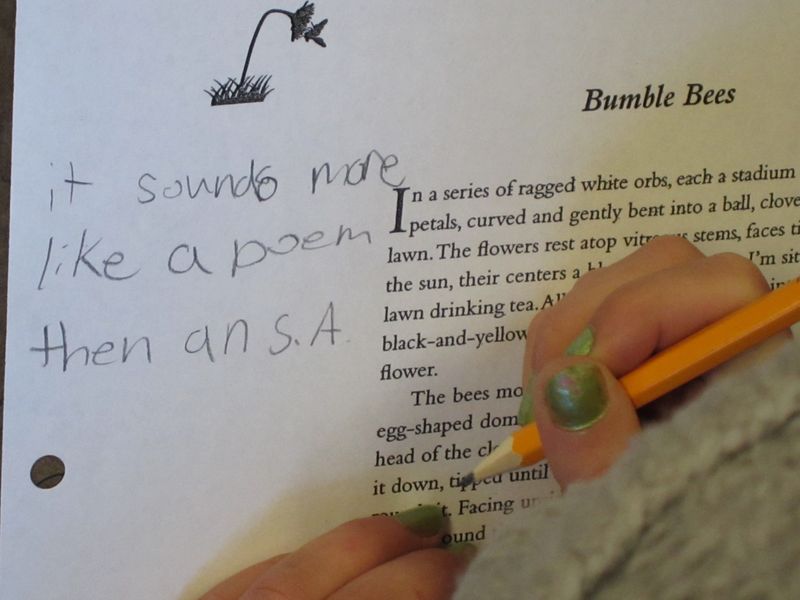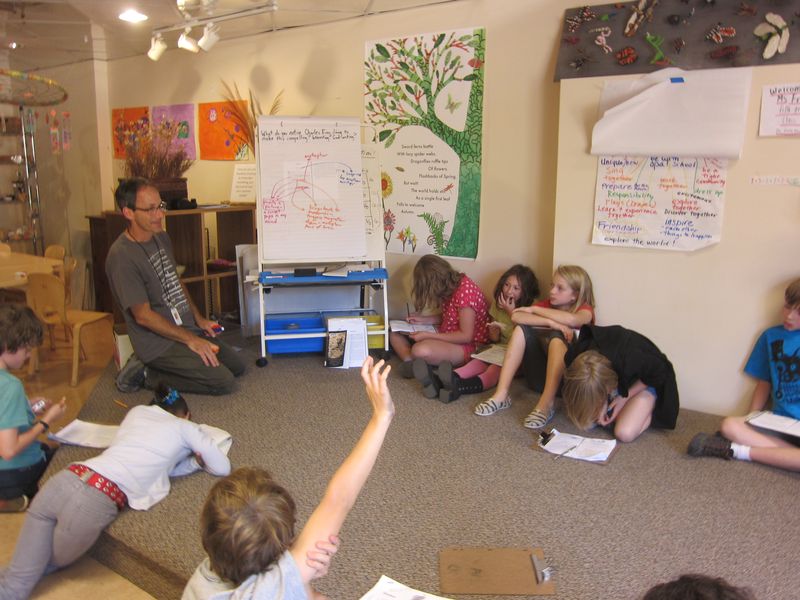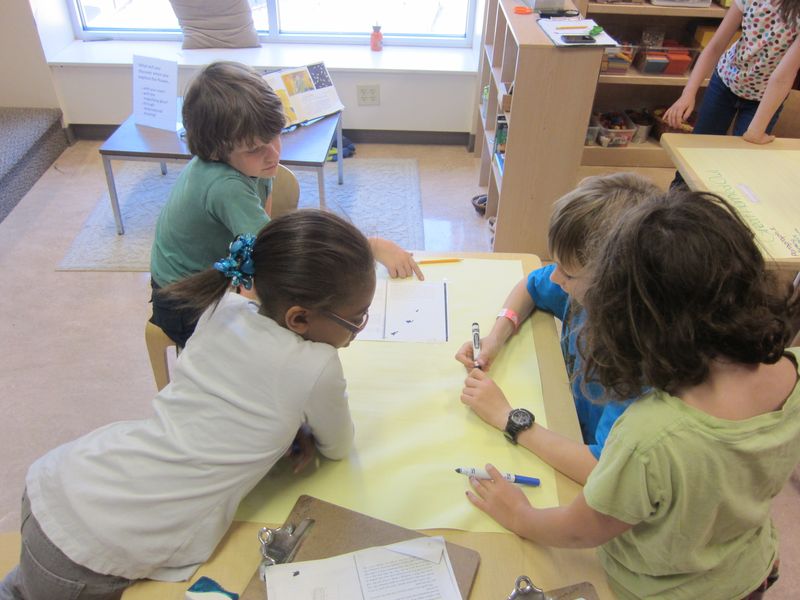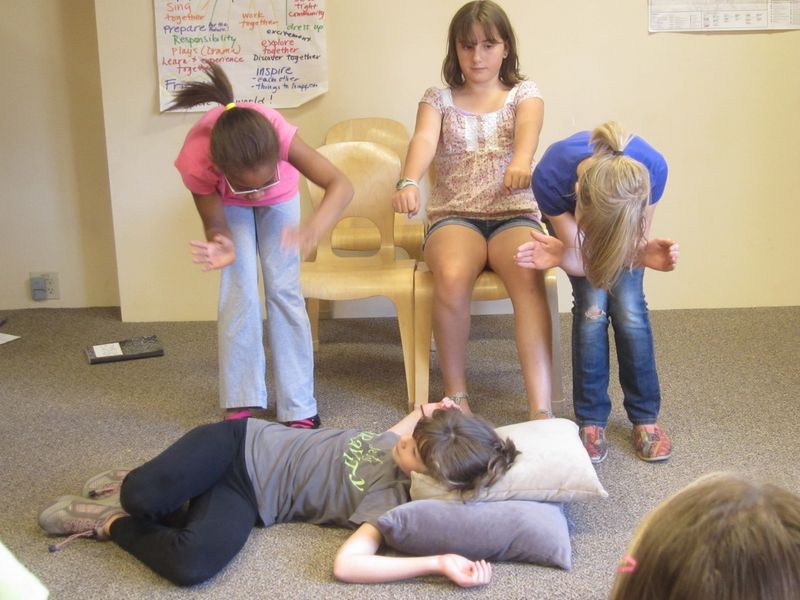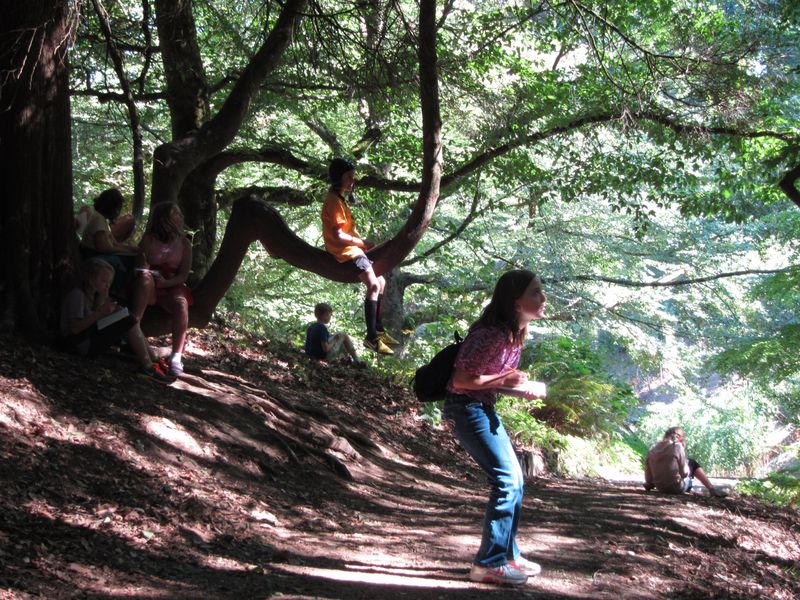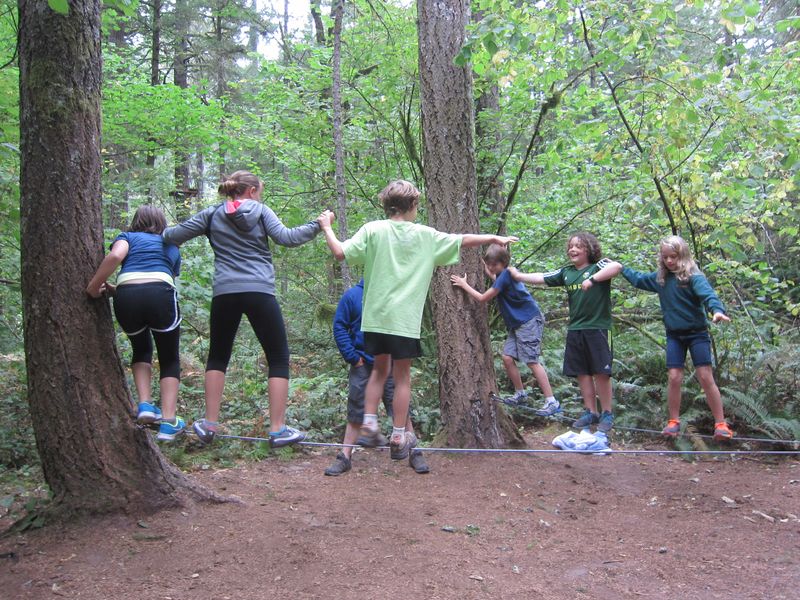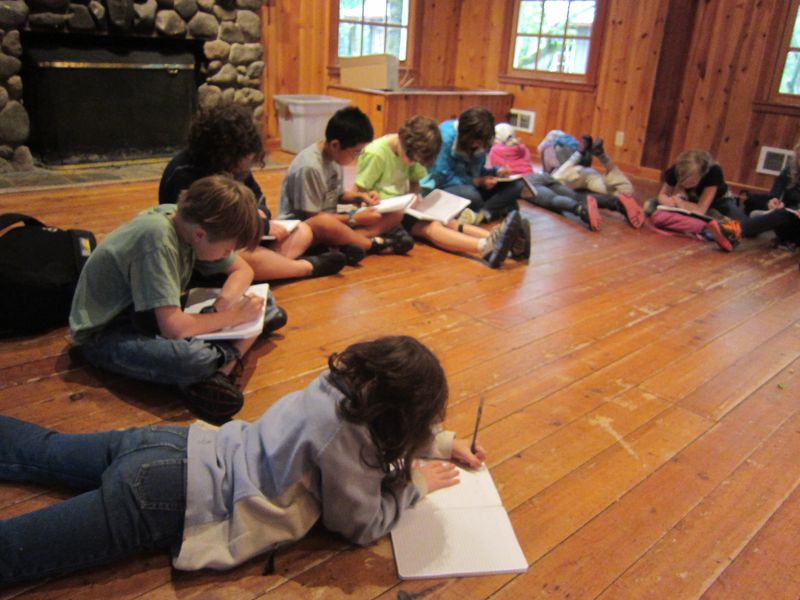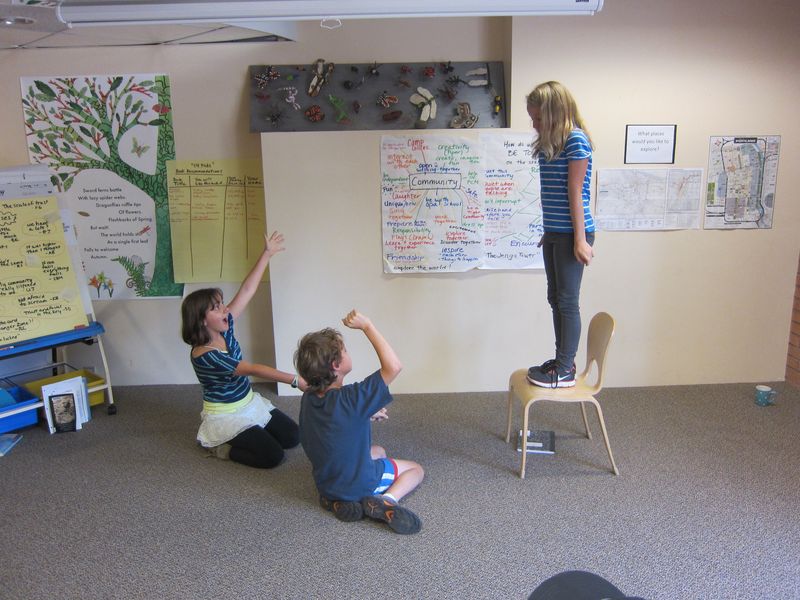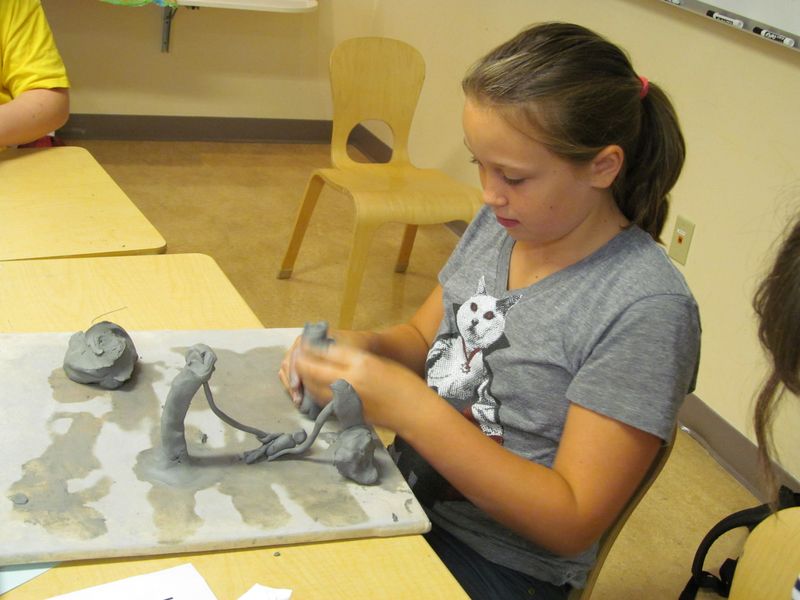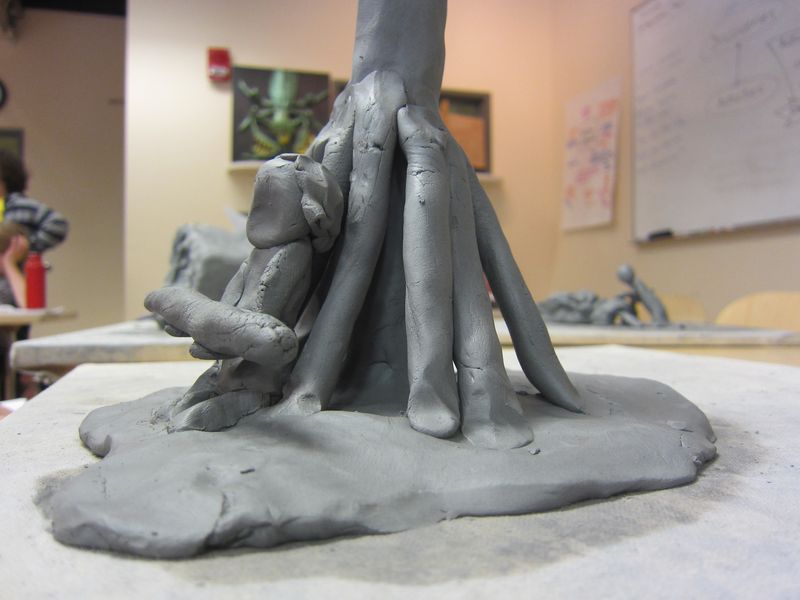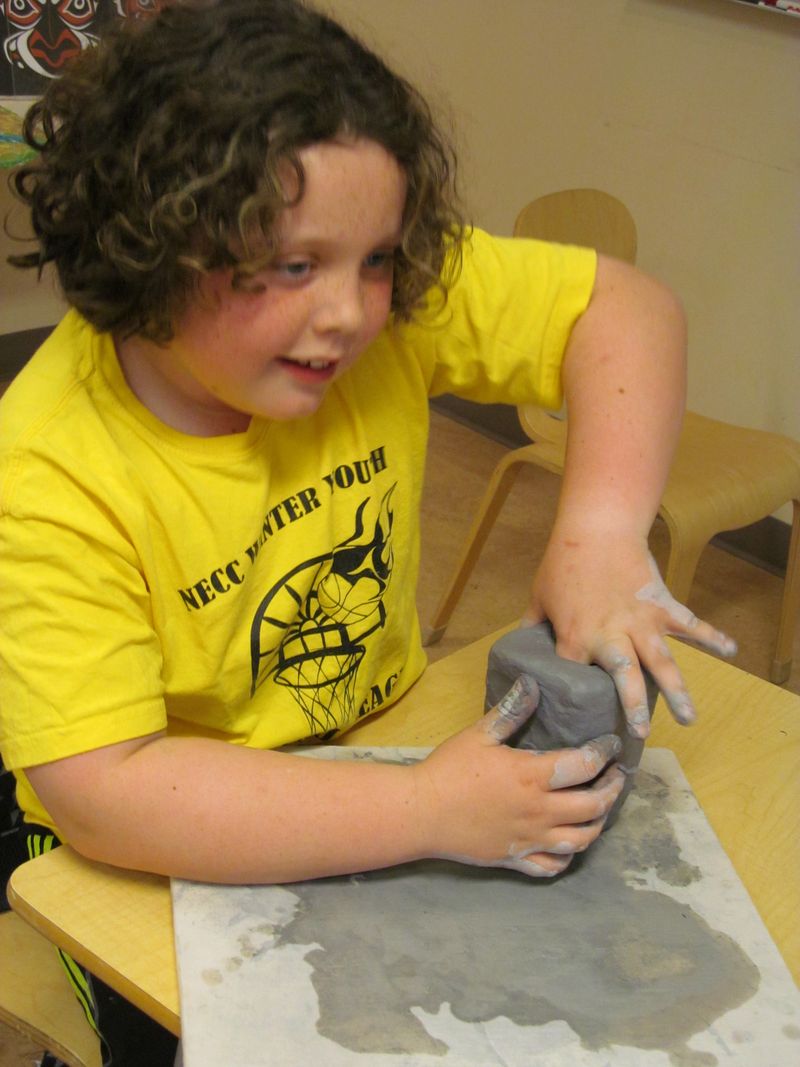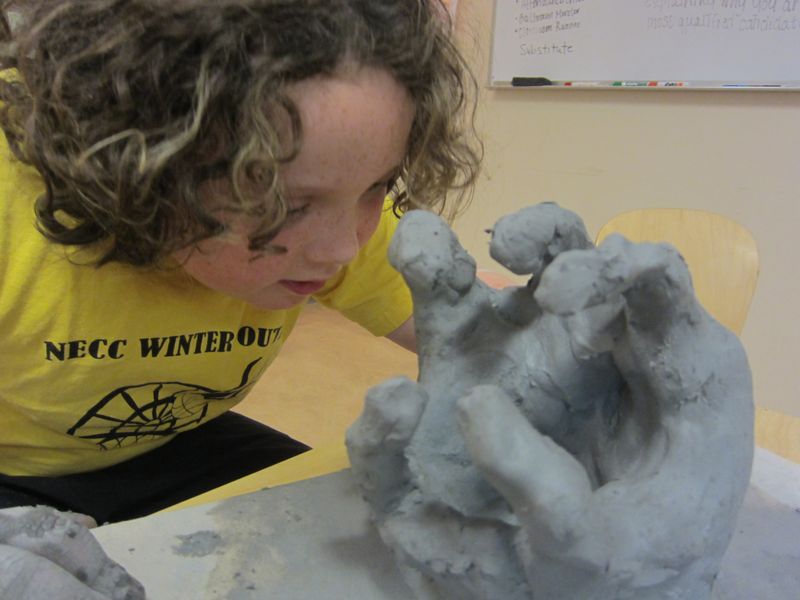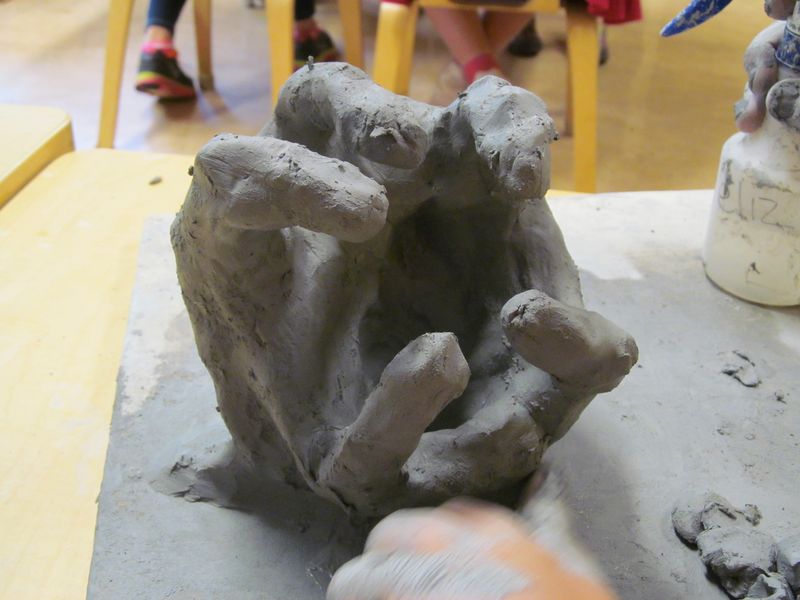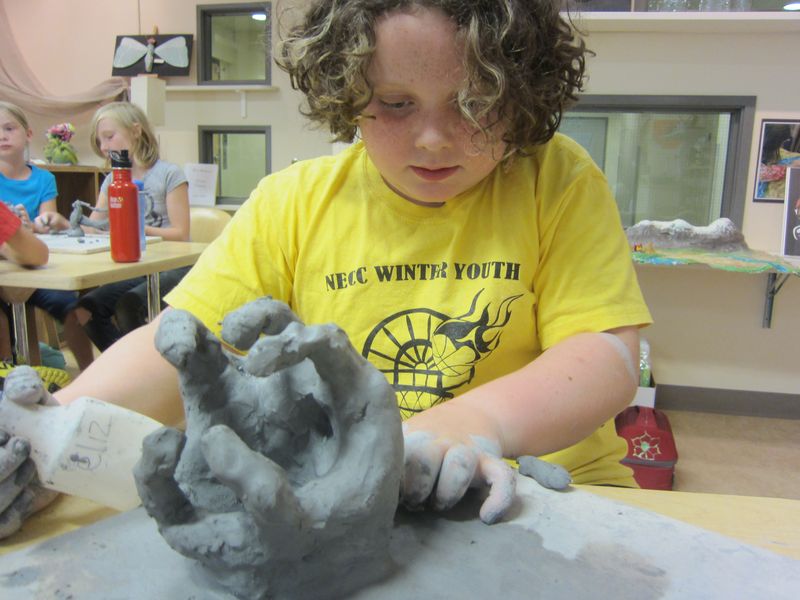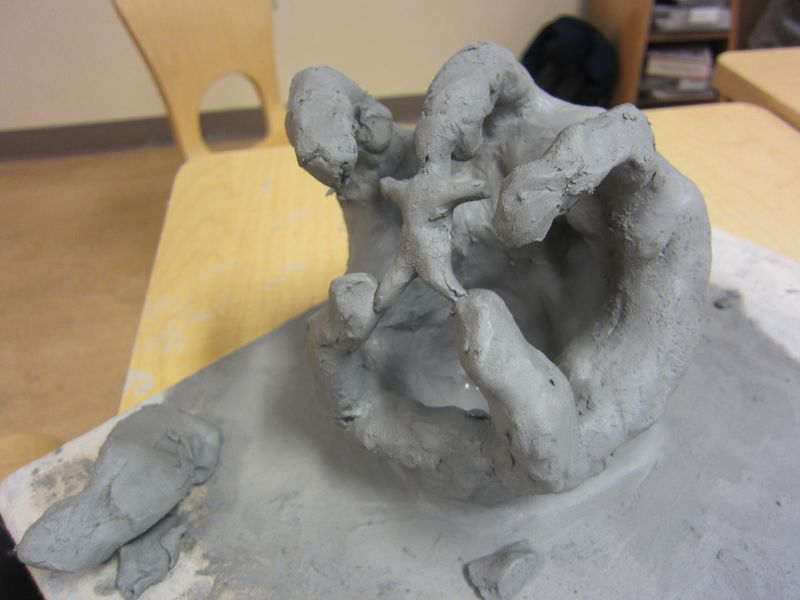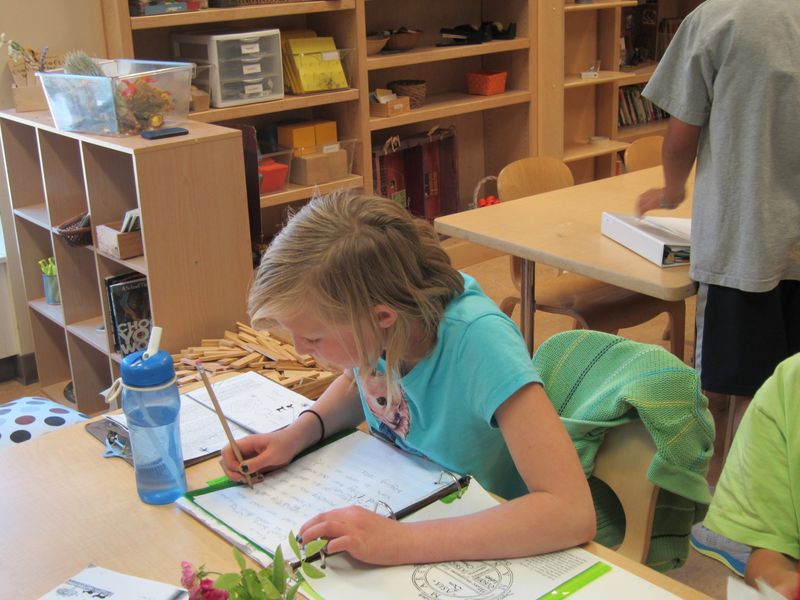What does a Genre-Based Writing Study look like in Opal 4?
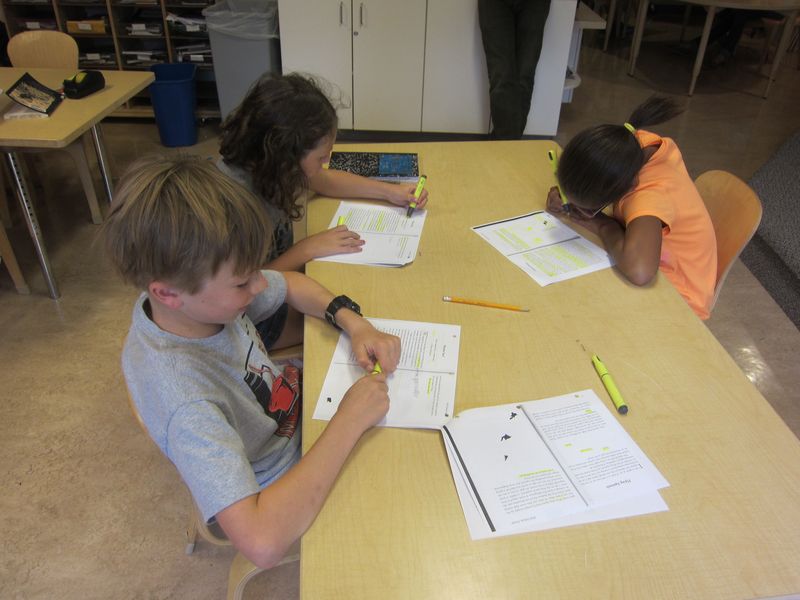
As we discussed on Literacy Night at Opal School last week, the writing component of Literacy Studio in the upper grades at Opal School is inspired by what we call genre studies. In a genre study, students read many published examples within a chosen genre to figure out what the author of those pieces did to make them interesting, compelling and good. Then, the students write “under the influence” of the authors of the pieces they have read and studied.
For the last month or so of school, the students in Opal 4 have been working on a genre study based on a collection of essays written by Charles Finn called Wild Delicate Seconds: 29 Wildlife Encounters. While Matt shared a peek into our work on the blog home page, I wanted to show you a bit more of what this study has looked like in our classroom.
The study kicked off when we handed the Opal 4 students a mentor text packet. To write like an author, we must start by reading like authors. Students read the essays we have chosen from Charles Finn’s books, writing note for themselves as they read.
How do the students define mentor text?
KB: It’s a text that teaches you, writing that teaches you.
ER: An author teaches you through their words.
RC: I don’t think an author sits down and decides to write a mentor text. It’s how we choose to use it. The mentorship is what a writer can do to make their writing compelling.So we practice the habit of reading like a writer
Noticing what the author of this text did to make their writing compelling, interesting or good. Chidlren try it on their own
and we deconstruct texts together – in this way we hear how other people learn from a text and build off of each other’s ideas
and we deconstuct texts in small groups.
Deeply understanding a mentor text is so important before a writer can use that text as inspiration for their own writing. In literacy studio, we continually ask ourselves, “Where are the arts?” At this point in our study, we used the drama tool of tableau to understand what the author was saying in the text.
NF is a toad in the middle of the road. PG drives the truck, and TJP and UJ are the headlights on the truck helping the driver (the author) really see the toad and realize that he values the animal’s life.
Then we went out into the Arboretum to practice the habit of looking at the world like we think this author must have — looking for opportunities to encounter wildlife.
Then we went to Camp Collins.
And a meaningful, personal topic for the students’ essays emerged. For their own writing, the children would write Finn-inspired essays to explore an encounter from their trip to Camp Collins that led to a personal discovery in the same way our mentor author made a personal discovery when he had an encounter with nature.
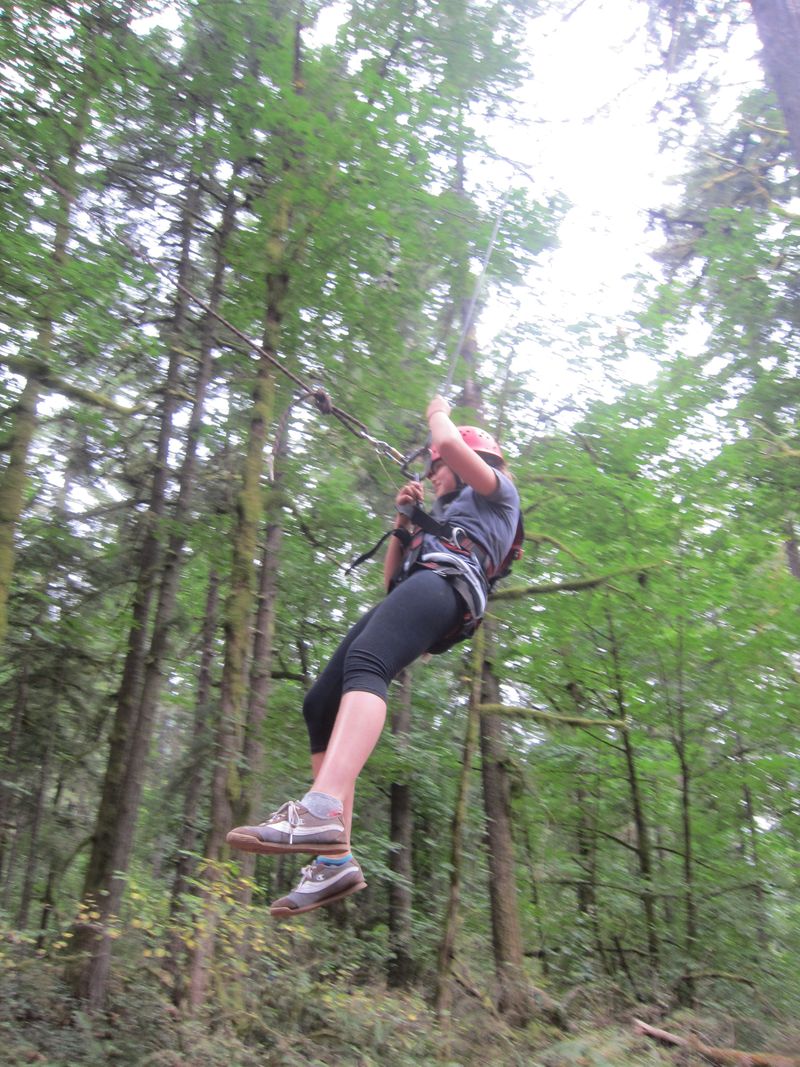
And we asked the children,
What discovery did you make about yourself at Camp Collins?
We had them write to explore their discovery, at camp and at school
We asked them to use group drama, again, tableau, back in the classroom
And we asked them again through clay: What discovery did you make about yourself at Camp Collins?
We teachers wondered, How would the students use the clay to move from reliving the activity to finding their discovery?
AB: I was braver than I thought I was. It was because my classmates each gave me their bravery, like they each put another rubber band on the rubber band ball of bravery.
PG: Building the shelter felt so real. I could imagine myself having to live in it to survive, and I knew I couldn’t have made a safe structure without my friends. I appreciated them so much.
And then there was SBM
SBM started by playing with his clay. He saw that his friend had stuck his finger in the clay and got it stuck. SBM was trying to recreate that suction feeling. In the process, he filled his clay with a bunch of water, and when he got his finger out, the whole thing collapsed with a whole in the center. About this time, SBM’s approach to the material changed. His focus shifted from trying to make the other people at his table laugh to the material itself.
He added fingers to his piece and said, “It’s like a hollow feeling when you fall down. You fall into this… you start to swing. You fall into a hole. It’s slippery inside and you have no idea what is going on. My body shut itself down and I closed my eyes and I thought I was dreaming. I was super happy after I did it. You have to face your fears.”
SBM let the material, the clay, help him discover what he was feeling.
In the end, he added himself to the sculpture
With the clay in front of them, the authors in Opal 4 are encouraged to write – to capture the essence of what they have created. We use the form of an Artist’s Statement to write about our art to capture feelings and emotions in words.
And then we write.
All of the writing up until the drafting time is practice – prewriting for the piece we will draft.
When enough time is spent immersed in the mentor texts and in materials to clarify thinking around ideas, the drafts just come. The student authors know the topic and the form so well, the piece just gushes forth.
We continue to draft and to revise, using materials again to support and clarify thinking.
We look forward to the final published work!


